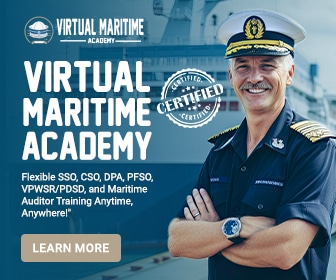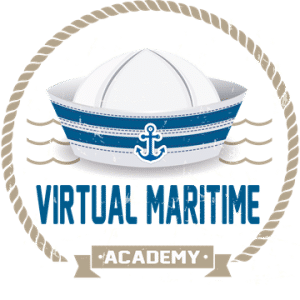Navigating the vast expanse of the world’s oceans demands more than just superior vessel technology and seasoned sailors—it necessitates stringent security measures. Enter the International Maritime Organization (IMO), the United Nations’ specialized agency responsible for regulating shipping. With its pivotal role in forging robust maritime security frameworks, the IMO ensures that waters remain safe from threats ranging from piracy to terrorism. The heart of this mission lies in the comprehensive guidelines it has established for maritime security training. These guidelines, forming the bedrock of safe maritime operations, outline essential procedures and protocols for preventing and responding to security incidents at sea.
Central to these guidelines are rigorous training programs designed to prepare maritime personnel for a myriad of security challenges. By adhering to these standards, maritime organizations can significantly mitigate risks, protecting both lives and assets. Compliance with IMO guidelines is not just a regulatory requirement—it’s a proactive strategy aimed at fortifying ships against ever-evolving security threats. Moreover, the global uniformity these guidelines provide enhances collaborative efforts in international waters, enabling nations to work in unison towards a safer maritime environment.
The Importance of IMO Guidelines in Enhancing Maritime Security
Explanation of IMO (International Maritime Organization) and its Role in Global Maritime Security
When it comes to safeguarding our maritime landscapes, the International Maritime Organization (IMO) reigns supreme. An undisputed leader in the regime of global maritime safety and environmental stewardship, the IMO was established under the United Nations umbrella to provide a framework for consistent, regulated shipping operations worldwide. Its mission extends beyond mere regulatory oversight; it crafts, refines, and enforces guidelines to fortify maritime security against evolving threats. Imagine a world without the IMO–a veritable Wild West of the seas. Luckily, the reality is quite the opposite, with IMO at the helm ensuring maritime operations are not just safe, but impeccably secure.
Overview of Key IMO Guidelines Related to Maritime Security Training
Among the plethora of IMO dictates, the International Ship and Port Facility Security (ISPS) Code stands as the linchpin of maritime security training. Enacted in the wake of the 9/11 terrorist attacks, this code offers a battery of guidelines that stress the importance of rigorous, standardized training. Among other stipulations, it mandates the appointment of Ship Security Officers (SSOs) and Company Security Officers (CSOs), each well-versed in security protocols and response strategies. The ISPS Code isn’t the only instrument in the IMO’s arsenal. Other pivotal documents, such as the International Safety Management (ISM) Code, and the Convention for the Suppression of Unlawful Acts Against the Safety of Maritime Navigation (SUA Convention), enrich the maritime security canon, ensuring comprehensive protection from piracy, terrorism, and other nefarious acts.
How Adhering to IMO Guidelines Helps in Preventing Security Threats and Enhancing Safety at Sea
Why should maritime entities swear by these elaborate guidelines? Simply put, aligning with IMO standards serves as both a shield and a sword. Compliance arms maritime organizations with the tools to proactively manage security threats, whether they be piracy, smuggling, or terrorism. These guidelines ensure a stratified line of defense–starting from the training of personnel to the technological backup for security protocol adherence.
For instance, a well-trained Ship Security Officer (SSO) is a veritable sentinel, equipped to conduct comprehensive threat assessments and implement robust security plans. These officers undergo meticulous training, featuring competency-based evaluations and practical drills, to ensure they are not just theoretically proficient, but battle-ready.
Furthermore, when organizations adhere to IMO guidelines, they foster a culture of safety and vigilance among crew members. The importance of drills and rehearsals cannot be overstated. By embedding security measures into the daily operational psyche, crew members swiftly transition from passive participants to active defenders of maritime assets.
Practicing these guidelines yields tangible dividends. Vessels achieve heightened situational awareness, reducing response times in the face of threats. Port facilities, similarly, are fortified with layers of security checks and balances, shielding against unauthorized access and potential sabotage.
The ROI isn’t merely in tangible security enhancements but also in heightened trust and credibility. Ships and ports compliant with IMO regulations enjoy greater acceptance and fewer hindrances in international waters and harbors. There’s an implicit assurance that vessels following IMO guidelines are less likely to be hotspots for security breaches, making them preferred partners in global trade networks.
Conclusively, the importance of IMO guidelines in maritime security training extends beyond fulfilling a regulatory checkbox. They are the bedrock upon which modern maritime security architecture is built, ensuring that our seas remain safe, secure, and conducive to global commerce.
Discover More About Our Courses Here!
Components and Implementation of IMO Maritime Security Training
Embarking on the journey of maritime security training requires a thorough understanding of the essential components outlined by the International Maritime Organization (IMO). These components form the backbone of any effective maritime security program. Here, we break down the crucial elements that make up an IMO-compliant training program and offer insight into successful implementation practices.
Essential Components of IMO-Compliant Maritime Security Training Programs
The ultimate goal of IMO security training is to ensure maritime professionals are well-equipped to handle potential threats and maintain overall safety. The following components are pivotal:
- Risk Assessment: Conducting a thorough risk assessment is fundamental. This involves identifying potential security threats, vulnerabilities, and the consequences of incidents. Such assessments turn hypothetical scenarios into tangible training drills.
- Security Awareness Training: Not only must crew members be aware of possible threats, but they also need to develop an understanding of the patterns and indicators of potential security breaches. This includes recognizing suspicious behavior and objects.
- Regulatory Compliance: Ensuring that training programs align with IMO regulations, specifically the International Ship and Port Facility Security (ISPS) Code, is vital. The ISPS Code sets out responsibilities to detect security threats and take preventive measures, essential for all maritime security professionals.
- Emergency Response Procedures: Emergency protocols should be embedded within the training modules, covering everything from personnel evacuation to counter-piracy measures.
- Communication and Reporting: Effective communication is critical. Training must emphasize the importance of clear, concise, and timely reporting during any security breach or incident. This includes intra-ship and ship-to-shore communications.
Steps and Best Practices for Effective Implementation
Components alone aren’t enough—efficient implementation transforms theory into practice. Maritime organizations can leverage the following steps and best practices to ensure a seamless adherence to IMO guidelines:
Step 1: Organizational Assessment and Planning
Start with a detailed examination of current security protocols against IMO standards. Identify gaps and areas needing improvement. Developing a comprehensive plan that prioritizes those deficiencies is crucial.
Step 2: Customizing Training Programs
No two maritime organizations are the same; therefore, security training should be tailored to meet specific operational needs. Incorporate real-world scenarios and customize modules to reflect the unique challenges your vessels might face.
Step 3: Regular Drills and Simulations
Periodic drills and simulations solidify theoretical knowledge through practical experience. Running regular security drills helps crew members remain vigilant and prepared to tackle emergencies efficiently.
Step 4: Continuous Monitoring and Evaluation
Implementation is an ongoing process. Continuously monitor the effectiveness of the training and modify programs as necessary. Use feedback from drills and real incidents to enhance training modules.
Case Studies of Successful Implementation
Examples abound of organizations effectively implementing IMO guidelines; here are two notable case studies:
Case Study 1: XYZ Shipping Company
XYZ Shipping Company faced rising concerns about piracy while navigating high-risk waters. They initiated a comprehensive overhaul of their security training program, integrating IMO guidelines rigorously. Emphasis was placed on emergency response and communication protocols. Through persistent drills and leveraging expert trainers, the company reported a 50% reduction in security incidents over two years.
Case Study 2: ABC Port Authority
ABC Port Authority focused on bolstering their maritime security training by embedding IMO principles into their existing framework. They prioritized security awareness and regulatory compliance training, including the ISPS Code. Their revamped training program facilitated swift and effective responses to security threats, resulting in enhanced safety measures and a secure port environment with zero incidents recorded in the past year.
Adopting and implementing IMO-compliant training programs is not merely a regulatory obligation but a pivotal step towards ensuring maritime security in today’s unpredictable world.
In delving into the intricate realm of maritime security, the role of the International Maritime Organization (IMO) emerges as a cornerstone. This regulatory body, through its comprehensive guidelines, steers the international maritime community towards fortified security measures, ensuring the protection of vessels, ports, and personnel. Paramount within these directives are standards that necessitate rigorous and thorough training programs. These guidelines, when meticulously adhered to, act as bulwarks against potential threats, thereby safeguarding global maritime operations.
Central to the efficacy of these directives are the key components ingrained within IMO-compliant training programs. These encompass various modules geared towards risk assessment, security awareness, emergency response, and crisis management, ensuring that maritime staff are well-equipped to tackle challenges head-on. Implementation of these guidelines requires a strategic approach where best practices include regular drills, continual skill enhancements, and leveraging advanced technologies to stay ahead of evolving threats.
Organizations that have embraced these standards, illustrated through several compelling case studies, demonstrate a marked improvement in security readiness and threat mitigation. By adopting these protocols, maritime entities not only comply with international requirements but also cultivate a culture of vigilance and preparedness, underscoring the profound impact of IMO guidelines on global maritime security.







